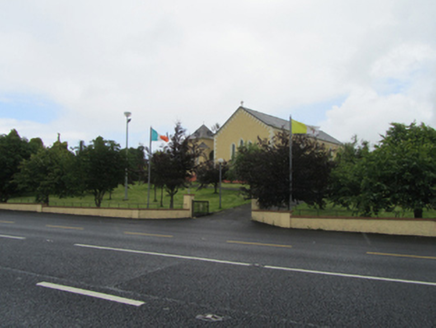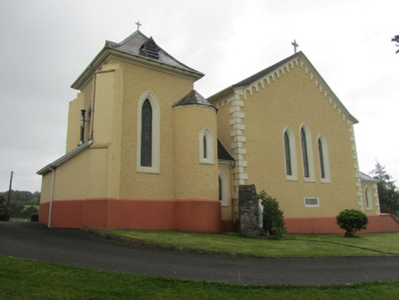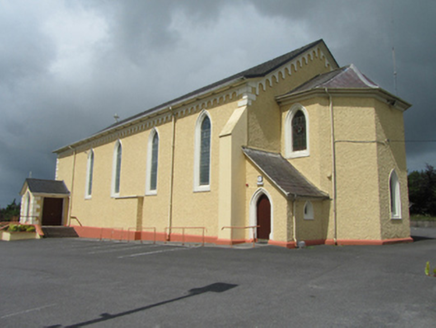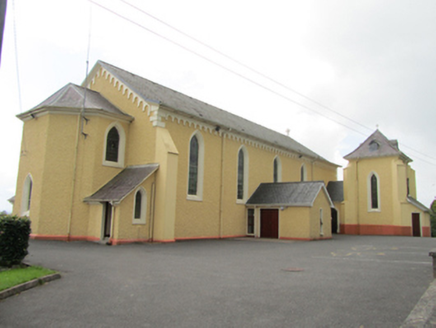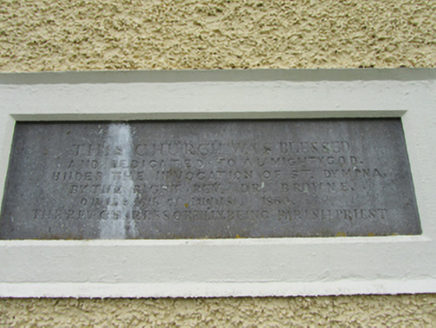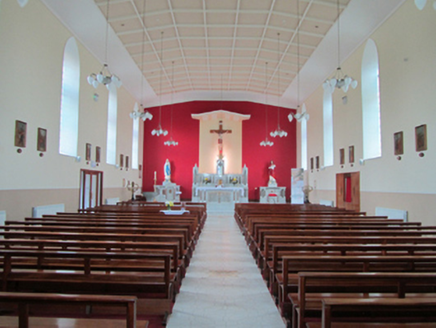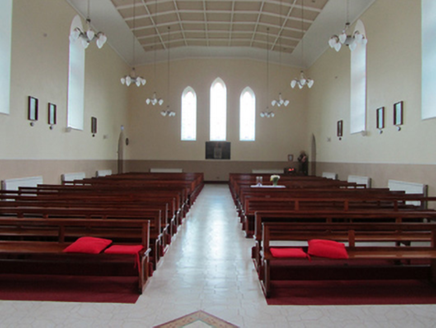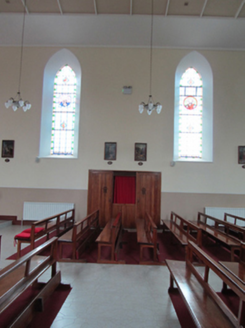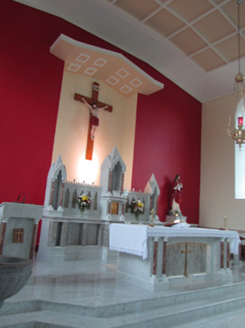Survey Data
Reg No
40403202
Rating
Regional
Categories of Special Interest
Architectural, Historical, Social
Original Use
Church/chapel
In Use As
Church/chapel
Date
1860 - 1865
Coordinates
251814, 297555
Date Recorded
27/07/2012
Date Updated
--/--/--
Description
Freestanding Gothic Revival Roman Catholic church, built 1861, having four-bay nave, unfinished single-stage tower to north with engaged circular stair turret and single-bay connection, side porch to south, polygonal chancel with flanking lean-tos to nave gable. Extensive alterations and renovations in 1960 and in 1996, with addition of cry chapel to north of nave and cutting off of chancel as sacristy. Pitched replacement slate roof altered to oversail at eaves and verge with timber soffit, lead rolls to apse hips, pyramid slate roof to tower with louvred lucarnes, cast-iron rainwater goods. Replacement roughcast render to walls, decorative smooth rendered arch pattern in band below eaves and splayed smooth plinth. Rendered quoins to west gable, buttresses to east gable, stepped diagonal buttresses to tower. Stone plaque to west gable with inscription bearing dedication and date 1860. Lancet windowz with splayed surrounds to nave, west gable, and tower. Pointed arch windows to chancel and flanking entrances. Stained-glass windows and replacement timber sheeted external doors. Replacement coffered ceiling, flat over centre with gentle slope to sides. Chancel arch replaced by cantilevered hood above reredos. Recent reredos, ambo, altar, and side altars. Octagonal stone font at altar. Graveyard to east.
Appraisal
Built to replace an earlier church, in the same townland, a short distance to the north, this church was completed in 1861 to designs by John Ryan of Dublin, who was also architect of the Convent of the Poor Clares in Cavan town. The Gothic Revival style and unfinished tower demonstrate the increasingly ambitious nature of Roman Catholic church designs as the nineteenth century progressed. The church presents a picturesque elevation to the road, enhanced by its elevated position. Though altered internally, the church makes a valuable contribution to the architectural character of its setting and remains an important landmark on the Cavan to Virginia road.
